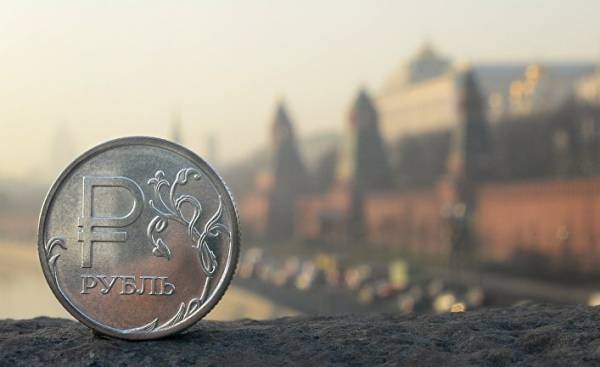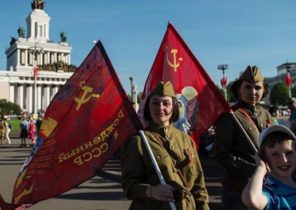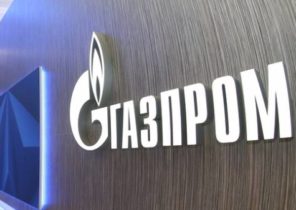
Experts of the Higher school of economy recorded stagnation in the Russian economy, which is likely to give way to recession. According to their estimates, the GDP growth in recent quarters was scanty, the production is treading water and investment in fixed capital falling as the full range of organizations and focused on the production of investment goods and services. Meanwhile, the staff of the Ministry of economic development and the Central Bank more optimistic about the situation.
In Q2-Q4 2016 GDP grew at a speed of 0.1% in the quarter, and this situation cannot be considered a revival, and correctly considered a stagnation, according to the report “Review of the state and business” of the Institute “development Center” Higher school of Economics (vesh).
“This is particularly obvious when you consider that in January-February 2017 the rate of growth of basic sectors of the economy, according to our preliminary estimates, again turned negative, reaching at the end of February, about minus 0.7% with the removed seasonality by December 2016,” write the authors of the report.
Note that by the end of 2016, according to Rosstat, GDP decreased by 0.2% (in 2015 — 2.8%). In the first quarter of 2017, GDP fell by another 0.3% compared to the same period last year, according to the study of Vnesheconombank.
The head of the Ministry Maxim Oreshkin, meanwhile, announced in late April that in the first quarter of this year GDP with the exception of seasonal and calendar factors, rose 0.4%. However, Rosstat has not yet published the data for the quarter, and the related socio-economic development led by War Department, published monthly for many years, not published from November 2016 (the Agency reportedly “is working on a new form document”).
Data from the HSE about the stagnation in production is partly confirmed by the statistics of Rosstat. The index of industrial production for the first quarter of 2017 was up by mere 0.1%. As seen in the chart of the Central Bank, increased the production of raw materials and intermediate goods, and the production of investment and consumer goods, by contrast, fell (figures of the Central Bank is not published).
As can be seen according to Rosstat, in the first quarter of 2017, the growth was not so many fields. Increased production volumes of electricity and heat (+1,3%) and mining (+1.2 percent, mainly due to the extraction of gas and coal, which in addition to domestic consumption are exported) and sand. Increased production of agricultural products (+0,7%).
In other areas of production there is a decline. The biggest manufacture in the field of water, wastewater and waste (-5,1%) and in construction (4.3 per). In particular, in the first quarter in the country was built by 25.8% less houses than the year before.
Manufacturing industry reduced production by 0.8%. Despite the General decline, the decline in production was observed in only 8 of the 22 industries. Basically, it’s tobacco products (-25,5%), metallurgy (-8,9%), printing (-8,6%), metal products (-8,4) and the so-called other means of transport, which include ships, cars, helicopters and bikes (-8,2%).
Meanwhile, growth in most of the 14 types of manufacturing industries can be explained by the desire of companies and citizens to save on goods imported equivalents which after the devaluation of 2014 become much more expensive than domestic. For example, increased production of medicines and medical materials (+13,8%), motor vehicles (+13.5 percent). In the latter category, the greatest growth is observed in the production of buses and trolleybuses (which in large volumes purchased mainly SOEs).
Signs of stagnation, which can be replaced by recession, are also observed in the dynamics of stock indices, which reflect the value of the shares of Russian companies, and in the dynamics of investments in fixed capital, continue the authors of the HSE report.
According to the Moscow exchange, the dollar-denominated RTS index fell from the beginning of the year to mid-April from 1147 to 1083 points, while the market capitalization of issuers fell from $177 billion to $162 billion By 26 April, the index rose to 1122, but has not lasted up to the beginning of the year. The MICEX index, according to the stock exchange since the beginning of the year to 26 April decreased from 2231 to 2000 points, the capitalization of companies from 10.7 trillion to 9.7 trillion rubles.
“In a similar way to behave and most sectoral indices, except for increasing their capitalization in the chemical industry and, to a lesser extent, enterprises of machine building and telecommunications,” write the authors of the report.
As for investment in fixed capital, in 2016, the rate of fall slowed down 10 times in comparison with the year 2015 and made up of 0.9% for the full range of companies, and -1.2% in the large and medium, according to the report. Among the outsiders on the dynamics of investment in 2016 was almost all industries, focused on the production of investment goods and services, including automotive (-15%), machinery and equipment (-35%), according to the text. The same can be said about investments in the sector, providing the accumulation of human capital — investing in the upgrading of health and education fell by 9% and 23% respectively.
Data on investment in the first quarter of 2017, Rosstat has not yet published. According to the forecast of the Central Bank, made at the beginning of April, the investments will grow in the first quarter at 1-3%.
Some economists, however, look at the situation more optimistically. As reported EurasiaNet.org head of the research laboratory analysis of institutions and financial markets of the Institute of applied economic research Ranhigs, Alexander Abramov, the strongest decline in production has already passed, and soon the country will begin the resumption of economic growth.
“Because of strong decline is now not observed, the company will soon begin to make investments, and if not, at least, they would accumulate inventories. In addition, positive changes can occur in domestic demand: sooner or later, the Central Bank further reduced its key rate [which determines the cost of credit in the banks], will make more affordable loans, including mortgages to retail consumers. So, if oil prices remain at the level at which they are now, to revive demand. There is a chance for growth”, — he said.







